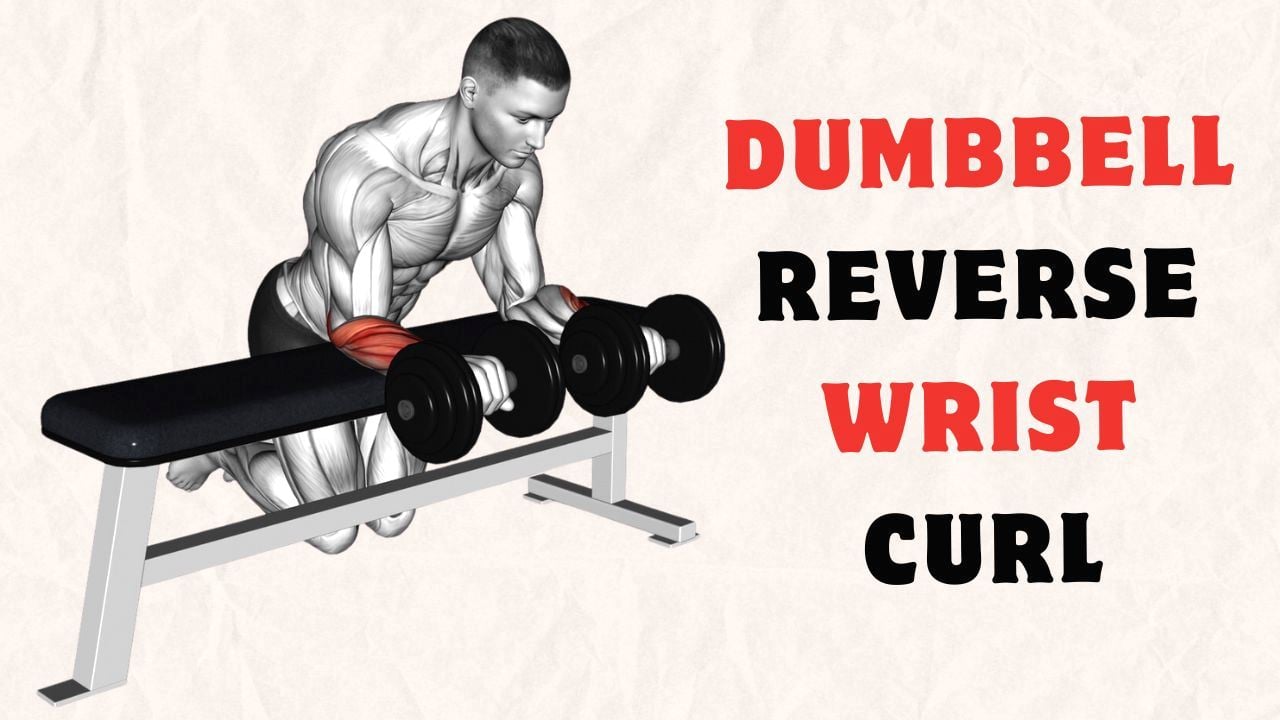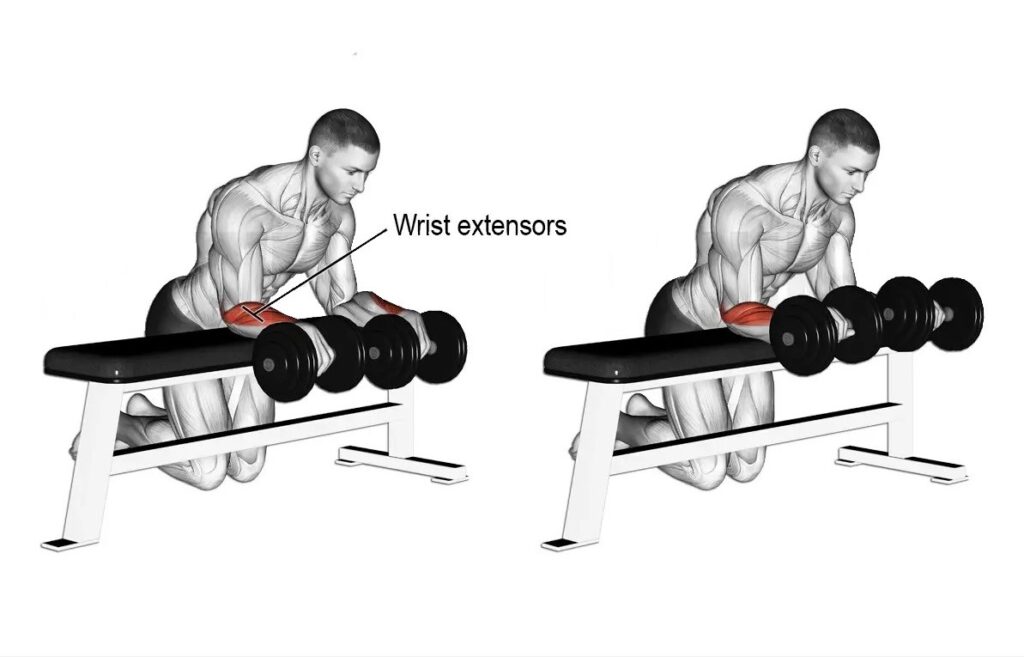Dumbbell Reverse wrist curls are similar to regular wrist curls but with a reversed hand position. It primarily targets the forearm muscles, particularly the brachioradialis and wrist extensors.
This exercise is unique compared to most other forearm and grip exercises because it emphasizes the wrist extensor muscles rather than the flexor muscles that are hit by exercises like wrist curls and deadlifts.
Here’s a tip I learned the hard way: start with a lighter weight than you think you need to train your forearm muscles.

Dumbbell Reverse Wrist Curl Muscles Worked
The primary muscles worked during the dumbbell reverse wrist curl are:
- Extensor Carpi Radialis Longus
- Extensor Carpi Radialis Brevis
- Extensor Carpi Ulnaris
- Extensor Digiti Minimi
- Extensor: Digitorum
Additionally, this exercise engages the:
- Brachioradialis (secondary involvement)

How To Do Dumbbell Reverse Wrist Curl
- Pick up dumbbells that feel challenging but comfortable. Don’t go for the heaviest ones right away.
- Hold the dumbbells with a palms-down grip (overhand grip) – that means your knuckles are facing the ceiling.
- Sit down on a bench and lean forward a bit. Now, rest your forearms on your bench, with your wrists hanging over your. You can also place the forearm on the thigh instead of the bench.
- Keep your forearms stationary on your bench and curl your wrists upwards, bringing your knuckles towards the ceiling as much as possible.
- Hold that squeeze for a second at the top – feel the burn in your forearms? That’s good.
- Slowly lower the dumbbells back to the start position, but don’t completely relax. Now, that’s one rep.
Tips and Form
- Focus on slow, controlled movements during the exercise’s curling and lowering phases. Aim for a 2-second curl and a 2-second lower for maximum effectiveness.
- Curl your wrists all the way up at the top to complete a contraction of the extensor muscles.
- To make the exercise harder, stop for a second at the end of the curl when your wrists are fully extended. This isometric hold increases time under tension, further challenging your forearms.
- To isolate each forearm and wrist, try performing the exercise with one arm at a time (unilateral variation). This can help address any strength imbalances between your forearms.
- To avoid hyperextending your wrists (bending them back too far), maintain some tension at the bottom of the movement.
Video illustration of One Arm Dumbbell Reverse Wrist Curl

Manish is a NASM-certified fitness and nutrition coach with over 10 years of experience in weight lifting and fat loss fitness coaching. He specializes in gym-based training and has a lot of knowledge about exercise, lifting technique, biomechanics, and more.
Through “Fit Life Regime,” he generously shares the insights he’s gained over a decade in the field. His goal is to equip others with the knowledge to start their own fitness journey.
